COVID-19 and Teaching the Next Generation of Nurses
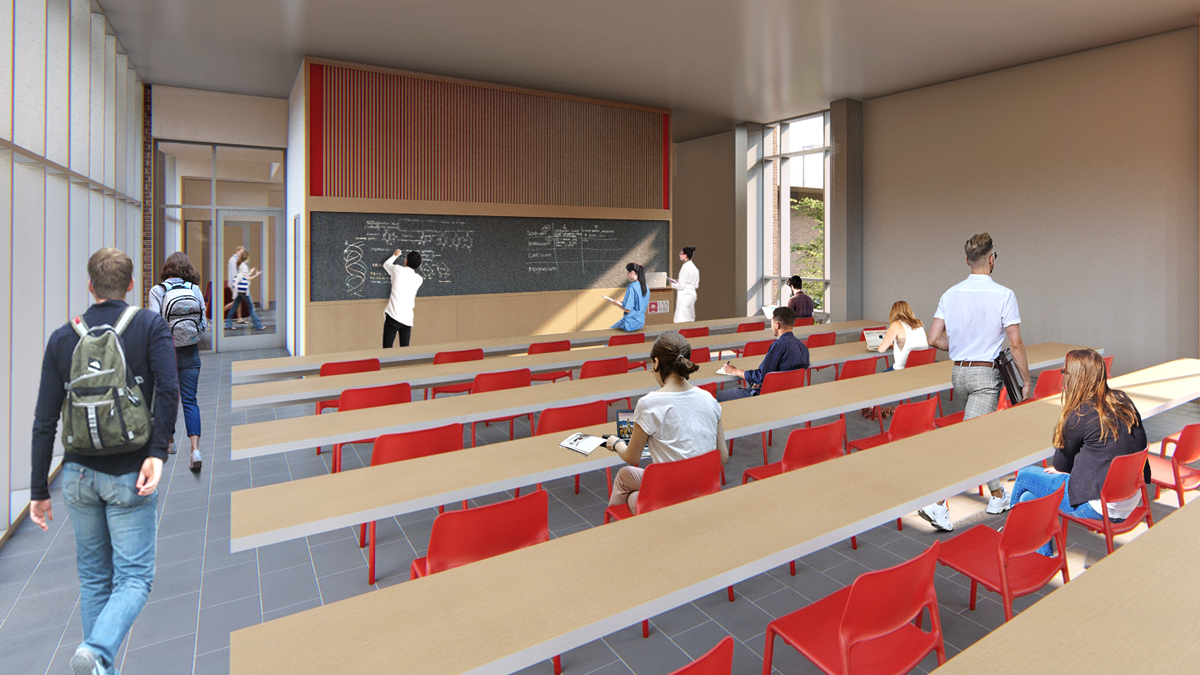 In the midst of COVID-19, a future home for a school of nursing highlights the interrelated issues of healthcare, economy, and education. Currently in design, the complete renovation of Wyllie Hall on the University of Virginia’s College at Wise campus will transform the environment in which the school’s nursing students learn and practice critical skills for their future careers. Programs like this one are fundamental to addressing the state and national nursing shortage, and there has perhaps never been a time when educating healthcare workers is more important. “It’s hard to imagine a project more critical (during COVID-19),” commented Dave Paley, UVA’s project manager overseeing the renovation of Wyllie Hall. “When you think about what we’re experiencing right now, and the nursing shortage we’ve already been experiencing – educating more nurses and doing it well is a must.”
In the midst of COVID-19, a future home for a school of nursing highlights the interrelated issues of healthcare, economy, and education. Currently in design, the complete renovation of Wyllie Hall on the University of Virginia’s College at Wise campus will transform the environment in which the school’s nursing students learn and practice critical skills for their future careers. Programs like this one are fundamental to addressing the state and national nursing shortage, and there has perhaps never been a time when educating healthcare workers is more important. “It’s hard to imagine a project more critical (during COVID-19),” commented Dave Paley, UVA’s project manager overseeing the renovation of Wyllie Hall. “When you think about what we’re experiencing right now, and the nursing shortage we’ve already been experiencing – educating more nurses and doing it well is a must.”
COVID-19 hasn’t just upended healthcare delivery, the workplace, and all levels of education – the economic toll is still being realized – and capital projects on college and university campuses will inevitably be impacted as public and privately funded projects adjust to the budget crunch.
Beyond the impact to institutions’ financial futures, the ongoing pandemic has changed the way instruction is delivered across the board. Faculty currently utilizing distance learning are already contemplating how this experience will change the way they teach in a classroom, lecture hall, and lab – and architects in higher education are as well.
“Following this long period of social isolation, I expect we will be more focused than ever on supporting the human experience with the goal of fostering personal connections and collaborative interaction.”—Matt Pearson, AIA, RIBA
Initial indications are that this experience has, by and large, demonstrated the value of the campus experience both socially and in terms of student access to facilities and faculty. To better understand what faculty and students are dealing with during this unique time, we went directly to the source: our stakeholders in the College at Wise’s nursing department. We want to refine the emerging design of the nursing school with a better understanding of how faculty use online instruction, the current challenges they’re experiencing, and how they see the world of healthcare and health education changing in the wake of COVID-19.
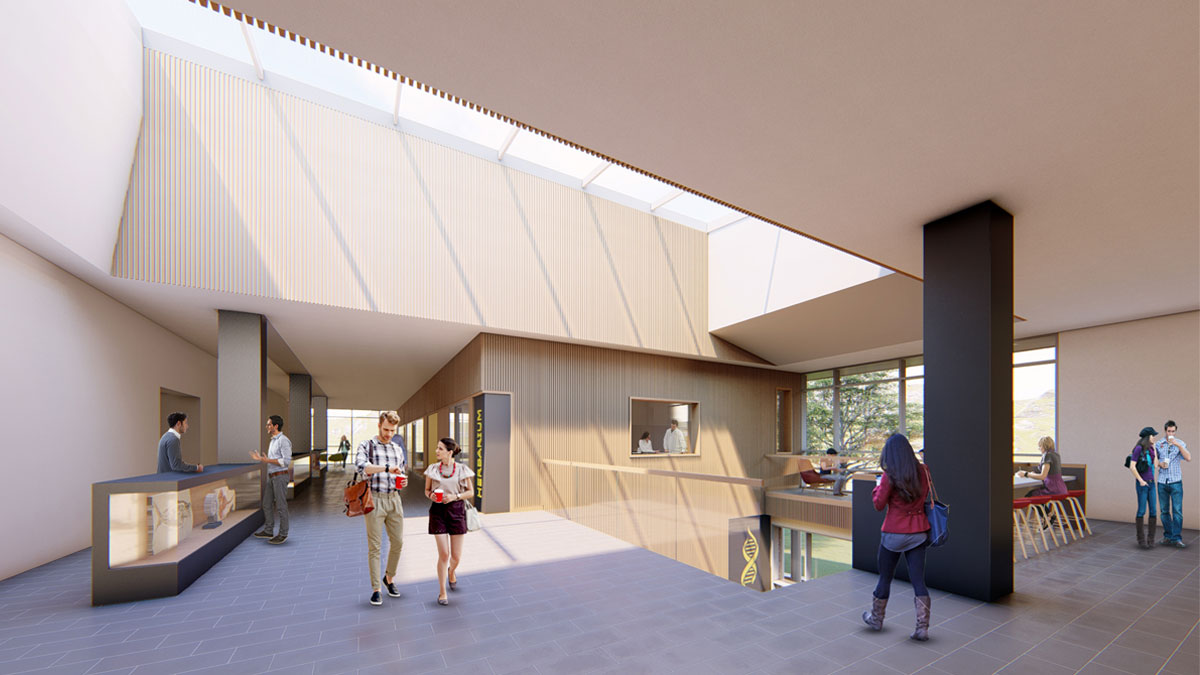
A new skylight brings natural light into the main entry space while showcasing the Herbarium Lab.
On distance learning in the midst of COVID-19
A consistent theme quickly emerged in our conversation – CAW’s nursing program had been generally well-prepared for the rapid shift to distance learning because they already utilized an e-learning portal, Moodle, for all didactic classes. When campuses closed due to COVID-19 and online instruction became the only way to teach, it was a simple enough switch. While both faculty and students miss the in-person experience, the courses themselves have been seamless to take online.
“When you can’t get into a real clinical setting, I think simulation becomes even more essential. But at the end of the day, nothing replaces human-to-human contact in the nursing field.” —Renee Stanley, lead nursing instructor
“There was no scrambling,” said Brandy McCarroll, one of CAW’s head instructors in nursing, “all of our material was already there.” Their greatest challenge, McCarroll shared, has been the inability to go into a hospital with students, show them how to work with patients, and do hands-on simulation either in a skilled nursing lab or hospital. In a field like healthcare, nothing can substitute hands-on learning. “Every one of us, I’m sure, when we go to the hospital, wants to think it’s not the first time our nurse has touched a real patient,” said McCarroll.
Renee Stanley, also a lead nursing instructor, spoke to the department’s adoption of virtual simulation: “We’re using computerized training – virtual simulation – in our teaching right now. We can create a simulation for the virtual patient, and the student has to ‘mouse over’ the right location with the stethoscope, or other piece of equipment, and work through what they observe. When you can’t get into a real clinical setting, I think simulation becomes even more essential. But at the end of the day, nothing replaces human-to-human contact in the nursing field.”
All fields of science require hands-on or project-based learning to effectively communicate the curricula of the instructor. In the absence of these opportunities, educators are not only making do – or making the best of the situation – but doing what top tier institutions do best: adapting to the situation at hand while striving for intentional outcomes in teaching and learning. To this end, Department Chair of Nursing, Cathleen Collins, noted the determination of her faculty and how they prepared COVID-19 case studies for their students within a week of going online.
On how the future Wyllie Hall will change the experience for both faculty and students
Wyllie Hall is a former library from the 1960’s that is being repurposed in its entirety for the Department of Nursing, along with a small Biology Department component. In thinking about how the new, modern spaces will support teaching and learning in the reimagined Wyllie Hall, McCarroll said, “Overall, it will be much more conducive to learning and will expand the ways we can teach and improve student interactions. Also, in terms of appealing to prospective students, the renovation will put us in a much better position. Our pass rates for state boards are very good, but students are naturally looking at multiple campuses and programs. The design absolutely changes what students on a tour would see. Having the best of the best will attract more students and retain more students.”
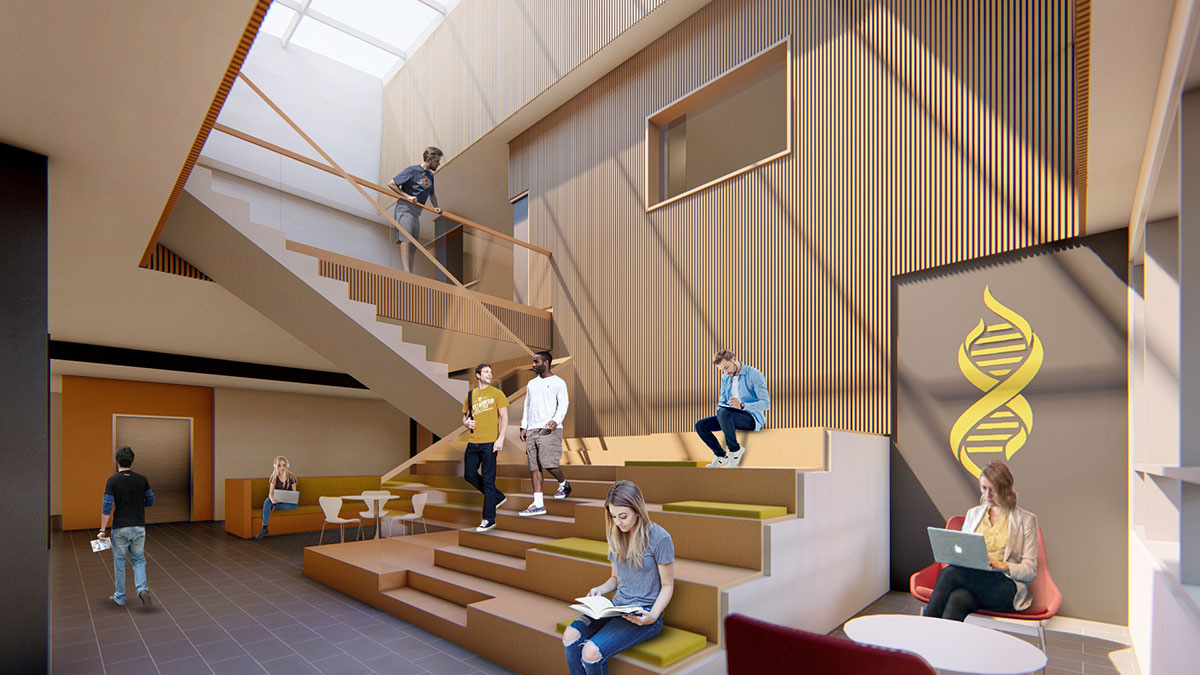
Beyond state-of-the-art instruction, the reimagined Wyllie Hall features appealing, much-needed common spaces for study, collaboration, and interaction. These ‘warmer’ environments complement the high-tech clinical spaces and support a positive student experience.
Stanley added, “Right now our classrooms and sim labs are side by side without much in the way of noise mitigation, and it can be distracting for students in the lab and in the classroom. Simulation is my passion, so I’m really excited about having this wonderful space.”
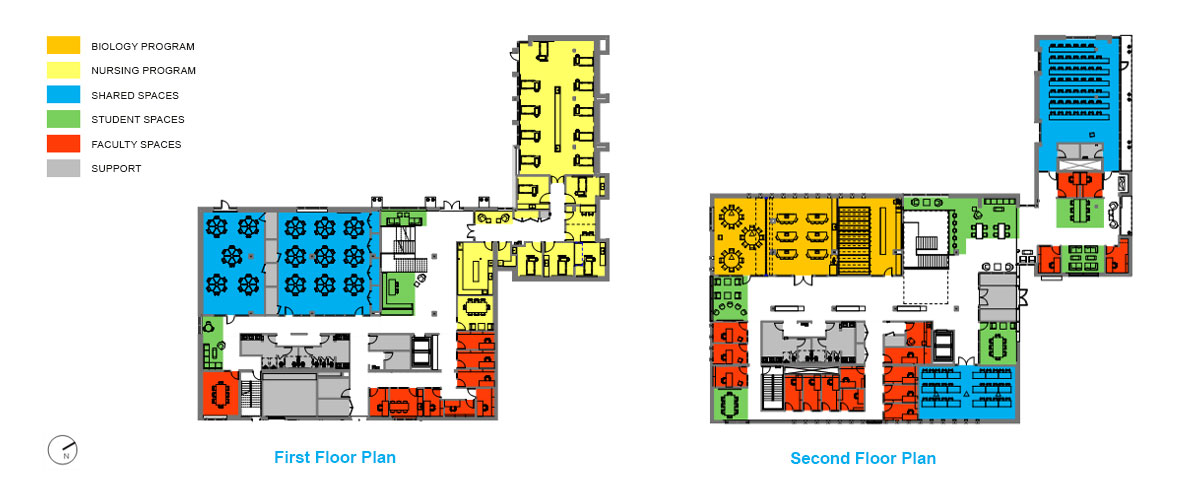
The design solution creates adjacencies between the skilled nursing lab, simulation rooms, debrief room, faculty offices, and formal and informal collaboration spaces.
The opportunities created by this new layout would allow for more space between students, single student simulations, and that nursing departments are already preparing students through simulation for the symptoms associated with COVID-19.
On COVID-19 and wellness
A significant portion of instruction for students occurs in the hospital and other healthcare facilities so that real-life, hands-on learning occurs. There is no replacement for it. With that, students observe and experience the emotional toll when you’re in PPE constantly and may witness a patient’s health worsen. “Unless you’ve sat and held someone’s hands as they draw their last breath, you can’t know what that feels like,” said Collins. McCarroll and Stanley echoed this sentiment, discussing COVID-19’s impact on the mental health and well-being of all healthcare staff and what may need to be done to support long-term wellness.
In this regard, thoughtfully designed spaces that incorporate elements to support mental health play an important role. In the new design for Wyllie Hall, the nursing department stressed the growing emphasis on wellness.
The concept of outdoor wellness spaces and the creation of the two plazas “is a gamechanger for Wyllie Hall and the college at large.”—UVA senior landscape architect, Helen Wilson
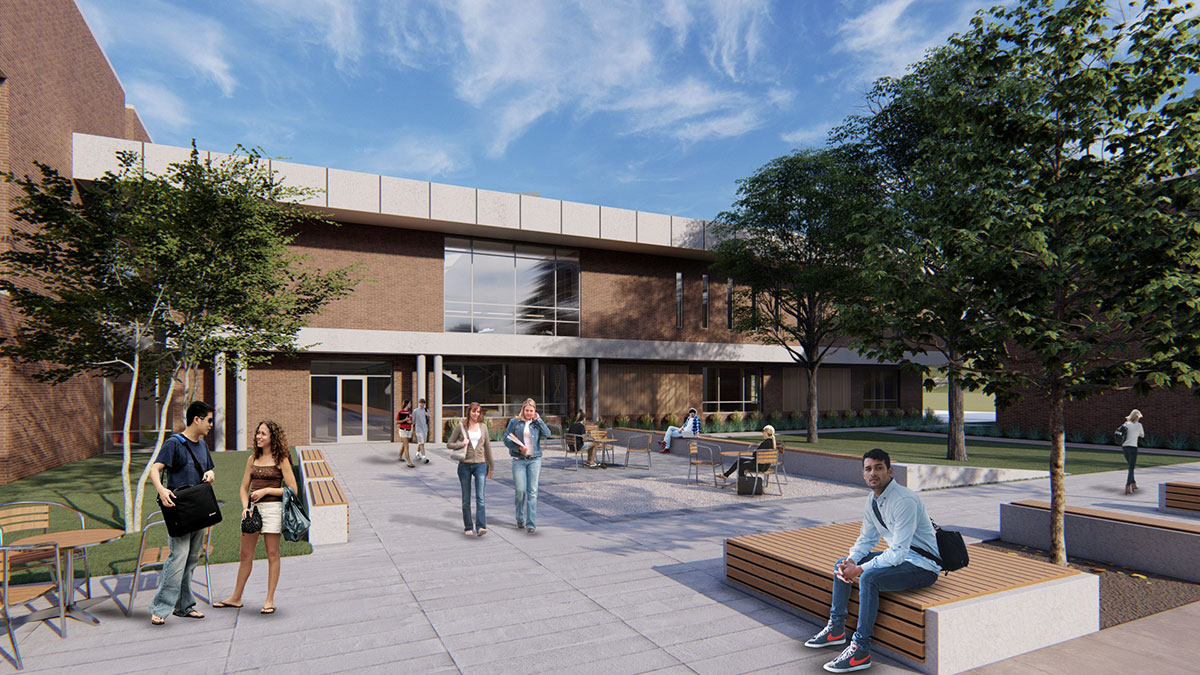
Two extensive exterior plazas cater to the notion of “building wellness” by fostering social interaction, large and small group discussion spaces, indigenous vegetation and shade trees, and a warm palette of textures and material tones.
Finding ways to support new students, new graduates, and experienced healthcare practitioners of all types with more wellness resources should be a priority. McCarroll, Stanley, and Collins all voiced the hope that this pandemic, while frightening, will ultimately compel more prospective students to say, ‘I want to help people, too,’ and pursue careers in nursing.
As the world moves forward, it seems clear that higher education – at least for 2020 – will continue to look a little different. While we are hopeful that students will return to campus in the fall, programs of all types may find themselves still needing to perform a larger portion of instruction online, maintain social distancing, and facilitate sanitation measures such as face masks and hand washing. Following this long period of social isolation, I expect we will be more focused than ever on supporting the human experience with the goal of fostering personal connections and collaborative interaction.
Matt Pearson, AIA, is a senior architect who joined Clark Nexsen in 2016 and left to pursue other opportunities in 2020.